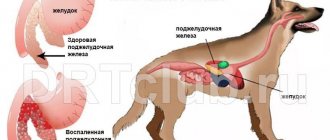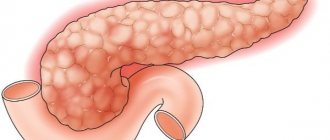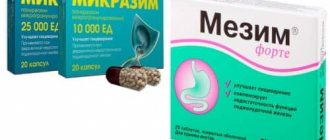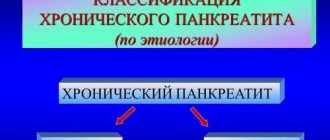Pancreatic surgery includes many subcategories that are designed to improve the quality of life of patients in the gastroenterology department.
The uniqueness of the presented gland lies in the fact that it is simultaneously an organ that produces external and internal secretions. It is responsible for the production of enzymes that guarantee stable digestion. The secretion enters the intestines through the excretory ducts. The organ is also a generator of hormones that enter directly into the blood. If treatment is not provided in time, the affected gland quickly fails, affecting neighboring tissues due to its destabilization.
The option is especially dangerous when the victim is diagnosed with an oncological tumor, be it benign or malignant. Almost always, such a scenario requires intervention to remove the problem area.
Medical indications
Anatomically, the pancreas belongs to the upper abdominal cavity, located behind the stomach. The localization site is quite deep, which presents some difficulty during surgery.
Content:
- Medical indications
- Surgery to help patients with acute pancreatitis
- What surgery is indicated for abscesses?
- Is surgery necessary for pseudocyst?
- Features of resection
- What operations are performed for chronic pancreatitis?
- Organ transplant success
- Postoperative period
Schematically, the organ can be divided into three parts: body, tail, head. All of them are closely adjacent to adjacent organs. Thus, the duodenum goes around the head, and the posterior surface is adjacent to the right kidney with the adrenal gland. The part is in contact with the aorta, vena cava, spleen and important vascular pathways.
Due to such dense anatomical fullness, people often wonder whether partial or complete excision of an organ is performed at all. But if an experienced surgeon is responsible for the procedure, then he will cope even with such complex tasks.
The unique organ amazes not only with its extensive functionality and location. It has a rather unusual structure, which includes not only connective tissue, but also a glandular analogue. Additionally, the parenchymal component of the body has an abundant vascular network and ducts.
Doctors admit that this gland is poorly understood in terms of etiology and pathogenesis. Because of this, its cure often involves a long-term, comprehensive approach. Sometimes even with positive dynamics, negative consequences appear.
Among the most common possible complications are:
- bleeding;
- suppuration;
- relapses;
- melting of surrounding tissue;
- exit of an aggressive enzyme beyond acceptable limits.
Because of this, surgical technology is used only in exceptional cases, when it is clear that no other alternative methods will help cope with the current situation. Removing the problematic part of the abdominal cavity, or partially, will allow you to get rid of constant pain, improve your well-being and even prevent death.
Among the main medical indications, experts note:
- acute inflammatory process;
- pancreatic necrosis;
- peritonitis;
- necrotizing pancreatitis with suppuration, which is an indication for emergency excision;
- abscess;
- trauma followed by bleeding;
- neoplasms;
- cyst;
- pseudocyst.
The last variation involves pain and outflow disturbances.
Depending on the primary source of the disease, the type of operation will be determined. The modern classification includes the following varieties:
- necrectomy, which is triggered by necrosis;
- total pancreatectomy;
- abscess drainage;
- drainage of the cyst.
Separately, decisions are considered regarding the need to excise only part of the organ, which is called resection. When it is necessary to remove the head, one of the most popular types of resection is used - pancreaticoduodenal. And if lesions are detected in the area of the tail or body, distal resection cannot be avoided.
Analysis of publications
The analysis was carried out for pancreaticoduodenal resection (PDR) and distal resection of the pancreas (DPR), accounting for more than 90% of all observations (Table 1). The results for the remaining radioactive waste on the pancreas were considered additionally if the information about them was sufficiently complete. The publications provide average values for the operations on which they are based. However, the differences in sample sizes are extremely large (from 1 to 250). Here and below, the weighted average value was used as an average value, which was determined by the formula: В срв i = (∑ ( В срij × Nij )) / ∑ Nij, where В срв i is the weighted average indicator for the operation of the i-th type; In avg ij is the average indicator for the operation of the i-th type in the j-th publication; Nij is the number of observations for the i-th type of operation on which the j-th publication is based. The use of an average made it possible to take into account the different number of clinical observations on which publications are based.
Table 1. Robot-assisted pancreatic surgery: summary of publications
| Operation | Number of interventions, abs. (%) |
| Pancreaticoduodenectomy | 474 (55,4) |
| Distal resection | 300 (35,0) |
| Median resection | 48 (5,6) |
| Pancreatectomy | 23 (2,7) |
| Enucleation | 11 (1,3) |
| Total | 856 (100) |
The following groups of criteria were analyzed: patient characteristics, disease, surgery, postoperative period. To compare the results obtained, data from laparoscopic (LSO) and traditional operations (TrO) on the pancreas were taken into account. Statistical parameters for TrO and LSO on the pancreas were taken from modern literature sources, which most fully reflect the features of these types of surgical interventions [32–39]. These publications were not taken into account in the analysis because they lacked data on the use of RA. This approach was applied everywhere, except in cases where the share of the analyzed criterion was so small that comparative analysis seemed meaningless.
Surgery to help patients with acute pancreatitis
After acute pancreatitis is confirmed in the victim, doctors first try to restore their former health without surgery. But when alternative approaches do not give the desired result, then radical measures cannot be avoided.
Experts note that, despite the seriousness of the disease, there are no strict criteria for indications for the procedure for acute pancreatitis.
The main indicators of the need to involve surgery are:
- infected pancreatic necrosis, which is characterized by purulent melting of tissue;
- ineffectiveness of conservative therapy for more than two days;
- abscesses;
- purulent accumulations in peritonitis.
The necrotic course of the disease, when suppuration haunts about 70% of all victims, is considered particularly difficult even for real professionals.
Without radical solutions, the mortality rate is 100%.
When infected pancreatic necrosis is confirmed in a patient, he is urgently prescribed an open laparotomy with cleansing of dead cells and drainage of the postoperative bed.
According to statistics, about 40% of clinical cases require repeat laparotomy in the future. Even an experienced gastroenterologist is unlikely to announce the exact time period. The reason for repetition is the need to completely get rid of harmful tissues affected by necrosis.
In particularly difficult scenarios, doctors do not even suture the abdominal cavity, leaving it open so that if there is a risk of bleeding, they can quickly pack the problem area.
Many people registered in the gastroenterology department of the hospital are interested in the fact of how much such care costs. But there is no specific figure here, since it takes into account the peculiarities of each operation along with the medications involved, anesthesia and subsequent recovery. Doctors warn that if a patient has undergone surgery, this is not the end of the expenses.
There is always a risk of needing re-intervention. The price will also increase due to the need to undergo quite a long rehabilitation. Separately, the cost is affected by the need to resort to cholecystectomy. This measure is necessary if, along with the main disease, the victim is also found to have gallstone disease. Then, in one go, the surgeon will get rid of the gallbladder.
What surgery is indicated for abscesses?
If a person has been confirmed to have an abscess, then sending him to the operating room cannot be delayed. Especially when the abscess was a direct consequence of limited necrosis after exposure to an infectious pathogen. Sometimes the provocateur of the deviation is a long-term period of suppuration of the pseudocyst.
People usually ask what can be done in such a serious situation, other than surgery, but without an autopsy with drainage, a person’s life is unlikely to be saved. Depending on the affected area, it will depend on which technology the gastroenterologist will prefer:
- open;
- laparoscopic;
- internal.
The first combination is based on laparotomy, which involves opening the abscess with drainage of its cavity until the area is completely cleared.
When a verdict is made in favor of laparoscopic drainage, a laparoscope is required, with the help of which the problem point is opened carefully. Next, the expert removes non-viable tissue and installs channels for proper drainage to function.
A difficult and at the same time productive technique is internal drainage, the difficulty of which lies in opening the abscess through intervention through the posterior wall of the stomach. For a successful outcome, laparotomy or laparoscopic access is used.
The result is presented in the form of the release of malicious content through an artificially created fistula. Over time, the cyst becomes obliterated, and the fistula opening closes.
Pancreas surgery
Anesthesiology and resuscitation
| Service code | Internal code | Name | Price, rub |
| B01.003.004.007 | 37.1.1 | Spinal anesthesia lasting up to 1 hour | 8 000 |
| B01.003.004.006 | 37.1.2 | Epidural anesthesia lasting up to 1 hour | 14 000 |
| B01.003.004.008 | 37.1.3 | Spinoepidural anesthesia lasting up to 1 hour | 20 000 |
| B01.003.004.009 | 37.1.4 | Total intravenous anesthesia up to 20 minutes | 6 000 |
| B01.003.004.009 | 37.1.5 | Total intravenous anesthesia from 20 minutes to 60 minutes | 12 000 |
| B01.003.004.010 | 37.1.6 | Endotracheal anesthesia from 1 hour to 2 hours | 20 000 |
| B01.003.004.010 | 37.1.7 | Endotracheal anesthesia from 2 hours to 3 hours | 26 000 |
| B01.003.004.010 | 37.1.8 | Endotracheal anesthesia from 3 hours to 4 hours | 34 000 |
| B01.003.004.010 | 37.1.9 | Endotracheal anesthesia from 5 to 6 hours | 58 000 |
| B03.016.011 | 37.1.10 | Express analysis of blood gases and electrolytes | 2 000 |
| B03.016.011 | 37.1.11 | Advanced express analysis of blood gases and electrolytes | 2 500 |
| B03.016.011 | 37.1.12 | Artificial ventilation for 12 hours | 7 200 |
| B01.003.004.010 | 37.1.13 | Endotracheal anesthesia up to 1 hour | 14 000 |
| B01.003.004.010 | 37.1.14 | Endotracheal anesthesia from 4 to 5 hours | 40 000 |
| B01.003.004.002 | 37.1.15 | Conduction anesthesia of the 1st category of complexity | 4 000 |
| B01.003.004.005 | 37.1.16 | Infiltration anesthesia (large volume or area) up to 30 minutes | 3 000 |
| B01.003.004.005 | 37.1.17 | Infiltration anesthesia up to 15 minutes | 1 400 |
| B01.003.004.004 | 37.1.18 | Application anesthesia | 1 000 |
| B01.003.004.009 | 37.1.19 | Drug sedation with hemodynamic monitoring | 3 000 |
| B01.003.004 | 37.1.20 | Prolonged regional anesthesia (days) | 8 000 |
| A11.12.001 | 37.1.21 | central vein catheterization | 10 000 |
| A11.23.002 | 37.1.22 | TAP TEST | 12 500 |
| A11.23.001 | 37.1.23 | Diagnostic spinal (lumbar) puncture | 3 500 |
| В01.003.004 | 37.1.24 | Anesthetic care for endoscopic examinations, including consultation with an anesthesiologist and stay in the recovery room for up to 60 minutes | 6 000 |
| B01.003.004.007 | 37.1.1.2 | Spinal anesthesia from 1 hour to 2 hours | 14 000 |
| B01.003.004.007 | 37.1.1.3 | Spinal anesthesia from 2 hours to 3 hours | 17 000 |
| B01.003.004.007 | 37.1.1.4 | Spinal anesthesia from 3 hours to 4 hours | 20 000 |
| A11.23.003.001 | 37.1.2.1 | Placement of an epidural catheter | 8 000 |
| B01.003.004.006 | 37.1.2.2 | Epidural anesthesia from 1 hour to 2 hours | 17 000 |
| B01.003.004.006 | 37.1.2.3 | Epidural anesthesia from 2 hours to 3 hours | 21 000 |
| B01.003.004.006 | 37.1.2.4 | Epidural anesthesia from 3 hours to 4 hours | 24 000 |
| B01.003.004.006 | 37.1.2.5 | Epidural anesthesia from 4 hours to 5 hours | 28 000 |
| B01.003.004.008 | 37.1.3.1 | Spinoepidural anesthesia from 1 hour to 2 hours | 22 000 |
| B01.003.004.008 | 37.1.3.2 | Spinoepidural anesthesia from 2 hours to 3 hours | 26 000 |
| B01.003.004.008 | 37.1.3.3 | Spinoepidural anesthesia from 3 hours to 4 hours | 27 000 |
| B01.003.004.008 | 37.1.3.4 | Spinoepidural anesthesia from 4 hours to 5 hours | 30 000 |
| B01.003.004.009 | 37.1.5.1 | Total intravenous anesthesia from 1 hour to 2 hours | 20 000 |
| B01.003.004.009 | 37.1.5.2 | Total intravenous anesthesia from 2 hours to 3 hours | 24 000 |
| B01.003.004.010 | 37.1.9.1 | Endotracheal anesthesia from 6 to 7 hours | 65 000 |
| B01.003.004.010 | 37.1.9.2 | Endotracheal anesthesia from 7 to 8 hours | 70 000 |
| B01.003.004.002 | 37.1.15.1 | Conduction anesthesia of the 2nd category of complexity | 5 000 |
| B01.003.004.002 | 37.1.15.2 | Conduction anesthesia of the 3rd category of complexity | 6 000 |
General hospital services
| Service code | Internal code | Name | Price, rub |
| S01.001.001 | 37.0.1 | Stay in a hospital ward (daily) | 6 000 |
| S01.001.002 | 37.0.2 | Stay in a hospital ward (daytime until 21:00) | 3 000 |
| S01.001.003 | 37.0.3 | Stay in the ward for accompanying persons (daily) | 6 000 |
| S01.001.004 | 37.0.4 | Stay in hospital room VIP 1 (daily) | 10 000 |
| S01.001.005 | 37.0.5 | Stay in hospital room VIP 2 (daily) | 16 000 |
| S01.001.006 | 37.0.6 | Stay in a hospital ward (daily, without meals) | 3 400 |
| S01.001.007 | 37.0.7 | Stay in the intensive care unit from 6-24 hours | 8 000 |
| B01.047.009 | 37.0.9 | Supervision by a therapeutic physician (1 visit) | 2 500 |
| A11.12.003 | 37.0.10 | Infusion therapy of expensive drugs | 4 000 |
| A23.01.001 | 37.0.11 | Extraction of surgical material using delivery means (calculated price) | 1 000 |
| A18.05.013 | 37.0.22 | Treatment using blood products (calculation, price) | 1 000 |
| A11.12.003 | 37.0.23 | Treatment using additional drug therapy (calculation, price) | 1 000 |
| A23.01.001 | 37.0.24 | Selection of implants (calculation, price) | 1 000 |
| S01.002.001 | 37.0.25 | Selection of compression garments (calculation, price) | 1 000 |
| B01.057.001 | 37.0.28 | Appointment with an operating specialist | 0 |
| A11.01.014 | 37.0.29 | Hemostasis using local hemostatic agent Zhelplastan 2.5 g | 6 600 |
| A11.01.014 | 37.0.30 | Hemostasis using local hemostatic agent Zhelplastan 5.0 g | 12 700 |
| A11.12.003.002 | 37.0.31 | IV drip infusion of Ferinject 500 mg (Ferinject, 50 mg/ml, 2 ml No. 5 in ampoules or 50 mg/ml, 10 ml in a bottle), duration up to 30 minutes | 8 000 |
| А11.12.003.003 | 37.0.32 | IV drip infusion of Ferinject 1000 mg (Ferinject, 50 mg/ml, 10 ml in bottle No. 2), duration up to 30 minutes | 15 000 |
| S01.001.008 | 37.0.1.1 | Stay in a hospital room (overnight) | 3 000 |
| S01.001.009 | 37.0.4.1 | Stay in hospital room VIP 1 (no more than 12 hours) | 5 000 |
| S01.001.010 | 37.0.5.1 | Stay in hospital room VIP 2 (no more than 12 hours) | 8 000 |
Pancreaticobiliary surgery
| Service code | Internal code | Name | Price, rub |
| A16.15.009.001 | 37.41.1 | Distal pancreatectomy | 150 000 |
| A16.15.010 | 37.41.2 | Pancreaticoduodenectomy | 350 000 |
| A16.15.009.003 | 37.41.3 | midline pancreatectomy | 250 000 |
| A16.15.003 | 37.41.4 | pancreatic tumor enucleation | 110 000 |
| A16.15.004 | 37.41.5 | cystoenterostomy (gastro) | 110 000 |
| A16.15.008 | 37.41.6 | longitudinal pancreatojejunostomy | 140 000 |
| A16.14.009 | 37.41.7 | Open cholecystectomy | 75 000 |
| A16.14.009.002 | 37.41.8 | Laparoscopic cholecystectomy stage 1 | 75 000 |
| A16.14.009.002 | 37.41.9 | Laparoscopic cholecystectomy stage 2 | 95 000 |
| A16.14.009.002 | 37.41.10 | Laparoscopic cholecystectomy category 3 | 110 000 |
| A16.14.009.001 | 37.41.11 | SILS cholecystectomy | 120 000 |
| A16.14.010 | 37.41.12 | biliodigestive anastomosis | 80 000 |
| A16.14.030 | 37.41.13 | Atypical (marginal) liver resection | 90 000 |
| A16.14.036 | 37.41.14 | hemihepatectomy | 300 000 |
Pancreato-biliary surgery (Tyumin A. A.)
| Service code | Internal code | Name | Price, rub |
| A16.14.009.002 | 37.41.10.1 | Laparoscopic cholecystectomy category 3 | 150 000 |
| A16.14.009.002 | 37.41.9.1 | Laparoscopic cholecystectomy stage 2 | 120 000 |
Is surgery necessary for pseudocyst?
Pseudocyst is a consequence of an acute inflammatory process in the pancreas. From a physiological point of view, a pseudocyst is a cavity that has not received a formed membrane, and inside it there is pancreatic juice.
Some people mistakenly believe that such a diagnosis is cancer, but in fact, getting rid of it is much easier than when diagnosing oncology. This even applies to situations where impressive accumulations of up to 5 centimeters in diameter are discovered.
If you do not help the patient at this stage, he will soon face numerous complications, which are expressed in:
- compression of surrounding tissues or ducts;
- chronic pain;
- suppuration up to the formation of an abscess;
- vascular erosions with bleeding due to exposure to aggressive digestive enzymes;
- breakthrough of accumulations into the abdominal cavity.
Such sad scenarios are confirmed by numerous reviews from those who have already gone through such a difficult test. To alleviate their condition, they were prescribed:
- percutaneous external drainage;
- excision of pseudocyst;
- internal drainage, which is based on creating an anastomosis of the cyst with the stomach or a loop of the cyst.
One of the options presented above is selected solely on the basis of analysis results.
3. Treatment of the disease as the disease progresses
With developed chronic pancreatitis, the body does not absorb fat well. One of the symptoms of this problem is fatty stool with an unpleasant odor ( steatorrhea
).
In addition, weight problems arise because the pancreas stops producing the enzymes needed to digest fats and proteins. Pancreatic enzymes
in tablets will help compensate for their deficiency in the body.
You may also need insulin
if the pancreas no longer produces it in sufficient quantities.
About our clinic Chistye Prudy metro station Medintercom page!
Features of resection
Removal of a part of an organ is prescribed only when health cannot be saved in any other way. This usually occurs due to damage by a neoplasm, or after a recent injury, when the overall prognosis remains consistently positive. Very rarely, radical excision is resorted to if a person has become a victim of chronic pancreatitis.
Due to some anatomical distinctive features of the blood supply to the gland, only one of two parts can be removed:
- head;
- body with tail.
But the first solution involves mandatory excision of the duodenum, since the system has a single blood supply.
To reduce the percentage of risks of surgery on the pancreas, doctors have developed several versions of resection. The most popular is the pancreaticoduodenal variation, which is also called the Whipple method. The technology relies on extracting not only the affected head of the gland along with the circumflex organ of the duodenum, but also part of the stomach, gallbladder and neighboring lymph nodes.
Such extensive intervention is indicated for cancer of the papilla of Vater or a tumor located in the specified area. But the matter does not end with the excision, because the surgeon is obliged to build a drain for the bile. The remaining gland tissue is used for reconstruction. Outwardly, it will look as if the specialist has re-formed the damaged parts of the digestive tract from what remains in the abdominal cavity.
The recovery program includes several anastomoses at once:
- gastric outlet with jejunum;
- pancreatic stump duct with intestinal loop;
- common bile duct with the intestine.
Occasionally, based on the prevailing situation at the time of the operation, surgeons give preference to pancreatogastroanastomosis. It is based on the release of the pancreatic duct into the stomach, and not, as usual, into the intestines.
Distal variation is necessary to free the tumor, which is located in the body or tail. It is believed that this is a more severe case when it comes to malignant oncological formations. They are almost always inoperable because they grow into the intestinal vascular system too quickly. Because of this, surgeons are more likely to make such a radical decision if the benign nature of the tumor has been confirmed.
Adding to the difficulty is the fact that the distal analog necessarily covers the need to remove the spleen. Such a complex system is explained by the fact that the technique is associated with the spread of diabetes mellitus at the postoperative stage.
Sometimes plans have to be changed on the spot. When the abdominal cavity is opened, the doctor may notice a more extensive spread of the pathology, which will prompt him to use a last resort - a total pancreatectomy. This means that complete excision of the organ is planned to preserve health.
Pain due to malignant tumors of the pancreas
Pain from pancreatic cancer is severe, excruciating and localized in the upper abdomen. It can radiate to the spine, sternum, heart, shoulder blades and arms. In some cases, pain is the first sign of the disease, in other situations it appears later - as the malignant process progresses.
Once a diagnosis has been established, the patient must take analgesics, including narcotics, to relieve symptoms. Typically, morphine is used. Preference is given to drugs for oral administration. But if obstruction of the digestive tract develops or swallowing is impaired, a patch or injection may be used.
For patients who cannot tolerate analgesics or whose effectiveness has decreased, a solar plexus block (a network of nerve endings located behind the pancreas) can be used. Analgesic drugs are administered either percutaneously under CT guidance or under endoscopic ultrasound guidance through the gastric wall. The effect is achieved in 50-90% of patients and lasts from 1 month to a year.
What operations are performed for chronic pancreatitis?
Some patients believe that with diabetes mellitus, along with the concomitant destabilization of the gland due to chronic pancreatitis, only surgery will help. But experts warn that with such a pancreatic condition, one can only hope for relief, and not for a complete recovery without the risk of relapse.
To help victims of the chronic form of such a dangerous disease, doctors have developed several surgical practices:
- drainage of ducts, which is necessary in case of pronounced problematic patency;
- resection with drainage of the cyst;
- resection of the head, which is characteristic of obstructive jaundice, duodenal stenosis;
- pancreatectomy for large-scale lesions.
The stones that are deposited in the ducts deserve special attention. They partially or completely block the passage of secretions, which provokes acute pain. In case of severe pain and the impossibility of reducing its manifestations with the help of pharmacological substances, there is no other option other than classical surgery.
This technique is called virsungotomy. This means cutting the duct to remove the stone, or draining above the level of obstruction.
Patient characteristics
Here and below, data are presented only for those indicators and types of operations for which there were representative results. Information on the average age of patients, gender, body mass index (BMI) is given in almost all publications (Table 2). Similar indicators are available in the groups of LSO and TrO on the pancreas. The average age of patients with LS PDR and Tr PDR was 62 and 67 years; for LS DRP and Tr DRP – 52 and 58 years. BMI in patients operated on using RK was 25.9–26.4 kg/m2. Consequently, all patients who underwent RAO on the pancreas had normal or overweight (pre-obesity). There were no obese patients among those operated on. Information on concomitant diseases, stratification by ASA, presence of previous operations, biliary hypertension, preoperative drainage of the biliary tract, pancreatic duct diameter and pancreatic consistency was not analyzed due to the low registration of these parameters in the analyzed publications.
Table 2. Characteristics of patients who underwent RAO on the pancreas
| Parameter | PDR | Distal resection |
| Number of radioactive waste, abs. | 474 | 300 |
| Average age of patients, years (s) | 64,1 (4,2) | 58,2 (10,3) |
| Share of men, % | 50 | 43,8 |
| Average BMI, kg/m2 (s) | 25,9 (1,4) | 26,5 (3,4) |
Organ transplant success
A relatively new word in surgery for pancreatic health is transplantation. It was first produced in 1967. But even then, scientists knew that it would be possible to change organs only together with the accompanying duodenum.
Despite the fact that after a kind of exchange it is possible to live with other internal organs for quite a long time, how long they live after such a transplant is not particularly encouraging. In official medicine, the longest life expectancy after a successful outcome was just over three years.
Due to the too high risks for the patient, as well as the high threshold of complexity, this transplant is not in significant demand, even if the victim has been diagnosed with a malignant tumor.
The difficulty ends with the fact that the gland is a hypersensitive component of the abdominal cavity. Even with a gentle touch with a finger, she receives significant injuries. If we add to this the need to suture a huge number of accompanying large and small vessels, then the manipulation turns into a many-hour ordeal for all medical personnel and the patient.
The search for a donor is also not particularly smooth, since this organ is classified as unpaired, which means it can only be taken from a deceased person. He must not only meet all the criteria, but also give prior permission for the use of his organs for those in need.
But even if you manage to get such a donor, the required part of the peritoneum must be delivered extremely quickly. The gland is sensitive to a lack of oxygen, and also begins irreversible processes half an hour after the cessation of stable blood flow.
This means that even after careful removal from the previous owner in freezing mode, it will survive no more than five hours. This is unlikely to be enough to organize transportation even between neighboring transplant centers, and if you add time for the procedure itself, it becomes completely difficult.
If the victim was lucky and the organ was delivered as soon as possible, then the algorithm for identifying it includes:
- placement in the peritoneum;
- connection with hepatic vessels;
- comparison with the splenic and iliac vessels.
This is difficult to implement from the technical side of the issue, and is also accompanied by a high chance of death due to extensive bleeding and subsequent shock.
Diseases
To analyze which disease criteria are decisive when using RK in pancreatic surgery, morphological data, as well as information on tumor size, were considered. In table Table 3 shows the nosological units for which RAO was performed on the pancreas. In some publications, some of the necessary information about the diagnosis was missing. Therefore, here and in other similar situations, the number of observations for each diagnosis was divided by the adjusted number of operations of this type (PDR, DRP). To do this, the number of observations for which there was no relevant information was subtracted from the total number of interventions of the same type. As a result, the sum of the shares of diagnoses for each type of radioactive waste on the pancreas might not be equal to 100%.
Table 3. Diagnosis of RAO on the pancreas
| Diagnosis | Number of observations, % | ||
| PDR | Distal resection | Median resection | |
| Pancreatic cancer | 57* | 23,9 | — |
| Neuroendocrine tumors | 6,1 | 29,0 | 24,0 |
| IPMN | 11,3 | 20,0 | 4,0 |
| Benign cystic tumors | 4,6 | 22,6 | 52,0 |
| Chronic pancreatitis | 5,8 | 0,6 | — |
| Other | 14,4 | 11,6 | 20,0 |
Note: * for RA PDR, adenocarcinoma of the BSDPC and terminal CBD is included.
Table 4. Scope of the robot-assisted stage in RA PDR
| Stage RA volume | Number of observations, % |
| Only RA mobilization | 5,5 |
| Only RA reconstruction | 38,2 |
| Complete RA intervention | 56,3 |
Table 5. Pancreatodigestive anastomoses and sclerosis of the pancreas in RA PDR
| Procedure | Number of observations, abs. (%) |
| Pancreatogastroanastomosis | 44 (21) |
| Pancreatojejunostomy | 100 (48) |
| Sclerosis of the pancreas | 65 (31) |
| Total | 209 (100) |
Table 6. Duration of interventions on the pancreas using RK and volume of blood loss
| Intervention | Number of observations, abs. | Duration, min (min–max; s) | Volume of blood loss, ml (min–max; s) |
| PDR | 474 | 484 (240–980; 98,2) | 342 (100–800; 209) |
| Distal resection | 300 | 278 (180–720; 82,7) | 200 (100–475; 131,9) |
| Median resection | 48 | 337 (150–506; 101,6) | 201 (158–300; 50,2) |
PDR was more often (57%) performed for cancer of the head of the pancreas, major duodenal papilla (MDPD), and terminal part of the common bile duct (CBD). A similar situation was when performing LS PDR (46–64%) and Tr PDR (65%). RA of DPC was more often performed for neuroendocrine tumors – 29%. Pancreatic cancer (23.9%), benign cystic (22.6%) and intraductal papillary mucinous tumors (20%) are represented with approximately the same frequency. LS of DRP was more often performed for benign cystic tumors (37–57%). TrDPR for adenocarcinoma was performed in half of the cases (47%), for cystic tumors – in 36%. The large proportion of patients operated on for cancer in the RA group of DRP can be explained by the technical advantages of RA over laparoscopy, which increases the radicality of surgical intervention. The sizes of pancreatic tumors are given in average form for each publication. The average sizes varied from 1.5 to 4 cm. According to the literature, the average tumor size for LS PDR and LS DRP was 2.7 and 3 cm. For TrO on the pancreas, this indicator was not a determining criterion.








